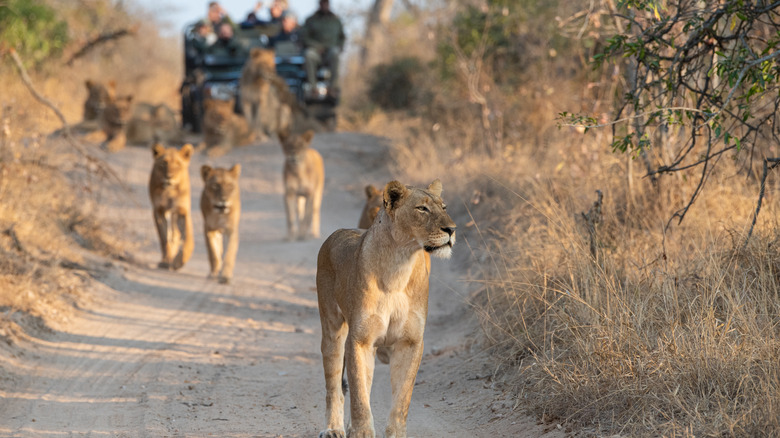The Best Time To Safari Might Not Be When You Think (And It Could Save You Thousands)
As the sky begins to shift from night to day, the sun slowly climbs, boasting hues of pale golden and orange. Familiar silhouettes make an appearance across the tree-dotted grassland, distinctive sounds echo in the air, and a fresh, crisp temperature still lingers. It's a brand-new day in the savanna and a chance for you to experience an untamed, raw Africa where animals take center stage. A safari is undoubtedly a one-of-a-kind adventure, but if you've been planning a trip to see the Big Five, when is the best time to go?
As we know, Africa is an all-season destination, but the weather changes throughout the year and across its regions. Most of us would be more than happy to avoid getting soaked to the core during the wet season, but that doesn't necessarily mean it'll be the case. According to experts, the off-season is still ideal for venturing into the "Mother Continent", when the skies become cloudier, the animals roam away from prying eyes — and your wallet will thank you.
There are advantages and disadvantages to traveling during low season, but if saving money is your priority, the price for a luxury safari varies between $9,000 and over $20,000, compared to a high-season cost that can reach $45,000. A deluxe nine-night safari in Botswana during peak season can start at $32,000, whereas, during off-season, you can save up to $15,000 — that's quite a bit of money. In Tanzania, home to the Serengeti National Park, a person might spend less than $7,000 in the low season versus $10,000 in the high season. Another cost-saving alternative is a group camping safari, with a cost of $180 per day, compared to $300 for a private experience in Kenya.
The best months for a safari in Africa
There isn't a universal solution, but you can plan your journey based on your travel style and the animals you want to photograph. During the Emerald Season (March and April) bring your binoculars for birdwatching to catch sight of migratory birds as they showcase their new, colorful feathers to attract potential mates. The rains turn the arid savanna into a wide, verdant landscape — and while it may be more difficult to spot some wild animals — it's the perfect period to visit Africa's "elephant capital of the world". March sets the tone for the rainy months that follow, a cacophony of sounds starting with a gentle rain and building into heavy showers. However, even with hammering rainfall, you can observe newborn gazelles, zebras, and gnus during the Great Migration in Tanzania. Between April and May, the renowned Kruger National Park in South Africa offers an affordable option as the country gets ready to transition from the wet to the dry season.
On the other hand, the Amber Season (November) falls between the humid and drought seasons. During the dry season, the rain-free months transform the lush terrain into a barren landscape, allowing you to spot predators hunting their prey. Before the rains arrive, October is an ideal month for game viewing in Kenya with scattered plants and animals gathering around ponds. In November, venture into Zimbabwe despite its variable weather for a thrilling chance to view one of the world's largest waterfalls and as many as 50 species of birds. On Africa's southwest coast, Namibia is a fascinating November destination, known for the breathtaking landscape of its "Skeleton Coast" and the opportunity to spot black rhinos, Damaraland elephants, and wild flamingos.

